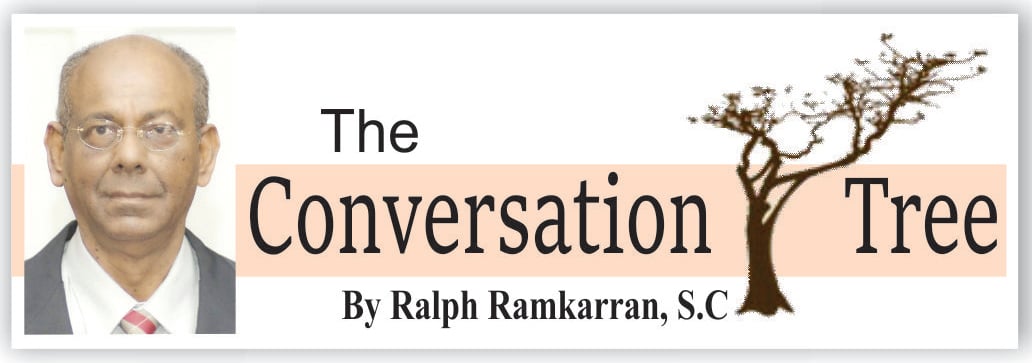For those like me who find it difficult to keep track, or have lost track, of political and judicial events since the no confidence motion of December 21, 2018, was passed against the APNU+AFC Government in the National Assembly, Anand Goolsarran’s newly published book, “Triumph of Democracy and the Rule of Law: Guyana 2020 Elections and their Aftermath,” has come to the rescue.
The opening chapters would immediately disabuse the reader of the notion that this book is a mere collection of data which are placed together in a chronological order as a record of events between December 21, 2018, and August 2, 2010. It is in fact much more than that. It is a serious analytical study in sequential order of the emerging drama, its consequences and conclusions. The echoes of this period are still playing out.
The vote of no confidence against the APNU+AFC Government by the National Assembly on December 21, 2018, is one dramatic highlight, among many, of the period. Mr. Goolsaran pointed out that had the no confidence motion taken place before the budget and estimates were passed in the National Assembly, the Government would have had no legal authority to spend after March 31, 2019. As events have turned out, with egregious constitutional violations, and massive, unauthorized spending, there is little indication that the APNU+AFC Government would have been unduly bothered about violating spending laws.
What subsequently followed was a torrent of events. Several cases were brought. One sought a ruling that the no confidence vote was unlawful, after the Speaker, Dr. Barton Scotland, had declined to entertain the Government’s motion to recall the no confidence resolution passed by the National Assembly. Engaging the courts was the major issue as to the majority of 65, the number of members of the National Assembly. The no confidence motion was passed by 33 to 32 votes. The Government claimed that there are two majorities – a simple majority of 33 and an absolute majority of 34. It was argued that a half of 65 is 32 and a half and since there cannot be a half person, it has to be rounded up by half to 33, and thus 34 would represent the incontrovertible majority. This led to much debate on the mathematical complexities of half persons, some with great levity. The Chief Justice dismissed the Government’s case, the Court of Appeal upheld the appeal and held that the majority of 65 is 34. The CCJ restored the Chief Justice’s ruling. The Court of Appeal was to uphold two further decisions supporting the Government’s position, one of which was set aside by the CCJ. Around this period the CCJ ruled that the President had violated the Constitution in selecting and appointing Mr. James Patterson as Chair of GECOM. Selecting a new Chair occasioned further delay. Mr. Goolsarran skillfully deals with these issues in sufficient, analytical, detail to give the reader a clear understanding, without a ponderous or pontificating overlay.
If anyone thought that these tension-filled events would lead to elections, it turned out that there was a long way to go. The issue of the electoral list was the next controversial matter. The Government insisted on a registration of voters in order to eliminate those who were no longer at their stated addresses. The assumption was that they had all migrated. Firstly, it violated the law and, secondly, it would have postponed elections for at least another year, while the Constitution provided for election within three months of a no confidence vote. The Chief Justice ruled, in a case challenging the registration, that it is unlawful to take names off the list. That scheme was blocked. These developments and their conclusions were set out and analysed in chapters of readable summaries to satisfy all those searching for the history of the period in one place.
The next major event was the elections. It was largely uneventful and free of disputes or controversy, until counting of the votes commenced. After it became clear that APNU+AFC was falling behind, the method of counting changed from relying on the Statements of Poll, as required by law, to spreadsheets. A legal challenged stopped this. But when the counting re-commenced, the ‘dirty bedsheet’ method was applied. No one could decipher the results which were shown on a dirty bedsheet. It was clear that a rigging process was continuing. It is only Court cases, eventually won by the then Opposition, and the most intense international pressure resulting in a recount of all the votes, that eventually forced the Government to concede defeat. This was not before a court case was filed by an APNU activist challenging the legality of the recount, authorized by President Granger. The CCJ upheld the recount. Mr. Goolsarran tells it all in complete detail in a most absorbing and readable book.
While election controversies are winding down with the dismissal of the two election petitions, and criminal cases against election officials, recently terminated, are still to be heard, the enormity of the reforms yet to be undertaken to ensure that election rigging would not happen again, are still to be completed. But after 1992, we believed that election rigging would never happen again!






